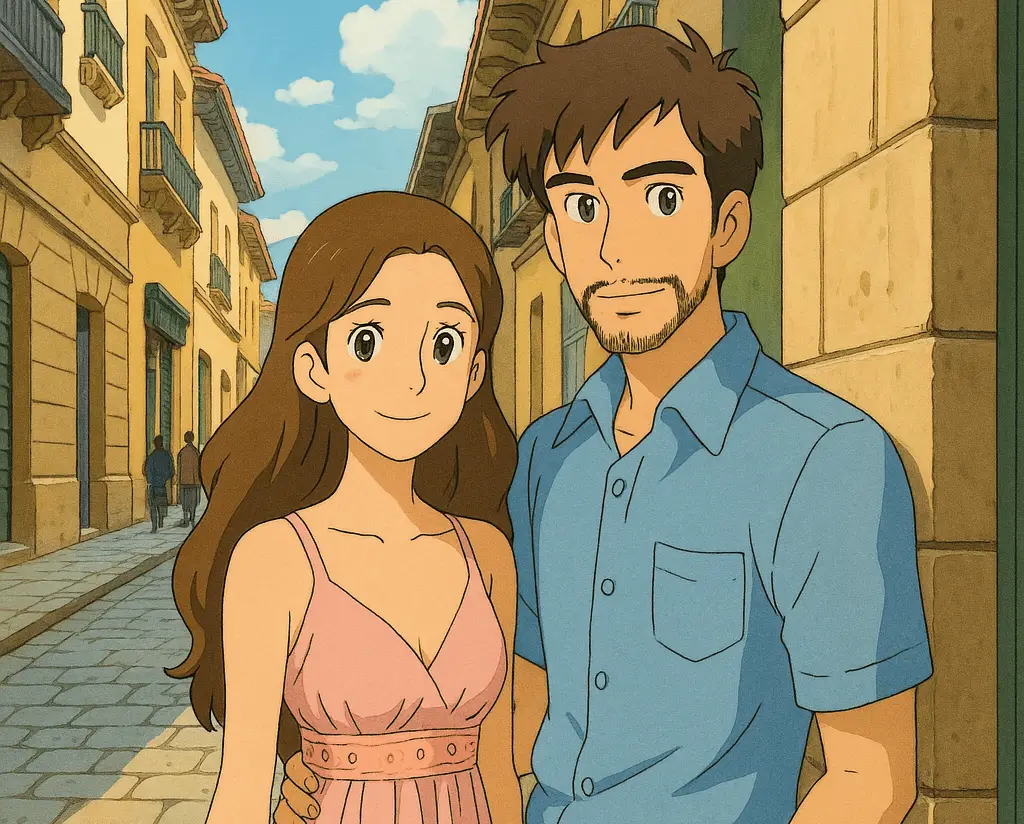The rise of AI-generated art, especially Ghibli-style illustrations, has captivated social media users worldwide. AI tools like ChatGPT and Grok have made it easier than ever to transform personal photos into dreamy, hand-drawn visuals reminiscent of Studio Ghibli’s aesthetic. However, beneath the beauty and nostalgia, there are significant risks associated with privacy, ethics, and environmental sustainability.

1. Privacy Risks: The Danger of Reversibility
One of the biggest concerns with AI-generated Ghibli art is the ability to reverse-engineer these images back into their original form. While AI models can stylize photos with remarkable accuracy, they also leave behind data patterns that, when processed correctly, could allow someone to reconstruct the original image. This poses a serious threat when individuals upload intimate or private moments, such as photos with partners, family, or personal experiences, expecting them to remain anonymous within an artistic filter.
Hackers or malicious actors with the right tools could exploit AI-driven de-stylization techniques to extract the original images, leading to potential privacy breaches, blackmail, or unauthorized distribution of sensitive visuals. This means that what might seem like a harmless artistic transformation could, in reality, expose personal details to unintended audiences.
Buy Online Courses
- Advanced Courses
App Development
Rated 0 out of 5₹2,999.00Original price was: ₹2,999.00.₹1,299.00Current price is: ₹1,299.00. Add to cart - Advanced Courses
Android Hacking
Rated 0 out of 5₹1,499.00Original price was: ₹1,499.00.₹799.00Current price is: ₹799.00. Add to cart - Basic Course
Quick Hack
Rated 0 out of 5₹999.00Original price was: ₹999.00.₹499.00Current price is: ₹499.00. Add to cart - Advanced Courses
W-CEH
Rated 0 out of 5₹14,999.00Original price was: ₹14,999.00.₹9,999.00Current price is: ₹9,999.00. Add to cart
2. Ethical Concerns: The Moral Implications of AI-Generated Art
Beyond privacy, the ethical concerns surrounding AI-generated Ghibli art extend to consent and artistic integrity. Many individuals may not realize that AI-generated images are often trained on vast datasets, some of which may include copyrighted artwork. This raises questions about the ethical use of AI tools that mimic the style of famous artists without their permission.
Additionally, creating and sharing AI-generated art of people without their explicit consent can lead to ethical dilemmas. For instance, using AI to modify someone’s image and then sharing it online—without their approval—violates their digital rights. This becomes even more problematic when images are altered in ways that may misrepresent or exploit the subject.
3. Environmental Impact: The Hidden Cost of AI Creativity
While AI-generated art might seem like a fun and harmless trend, it carries a significant environmental footprint. The computational power required to generate high-quality Ghibli-style images is immense. Large AI models like ChatGPT and Grok rely on extensive server resources, consuming vast amounts of electricity.
As AI-generated content becomes more popular, the increased demand for server resources leads to higher energy consumption. This contributes to carbon emissions and exacerbates environmental concerns. Data centers, which power these AI tools, require cooling systems and non-stop electricity, making AI-generated creativity a less eco-friendly option than traditional artistic methods.
Final Thoughts: Balancing Creativity with Responsibility
While Ghibli-style AI art offers a fascinating way to reimagine personal photos, users must remain aware of its risks. Privacy concerns, ethical considerations, and environmental impacts all play a role in shaping the responsible use of AI-driven creativity. Before transforming personal images into AI-generated art, individuals should carefully consider where and how these images will be shared, ensuring they do not unknowingly put themselves or others at risk.
AI technology continues to evolve, and so does its impact on our digital world. Balancing innovation with ethical responsibility is the key to ensuring that AI-generated art remains a source of inspiration rather than a cause for concern.





